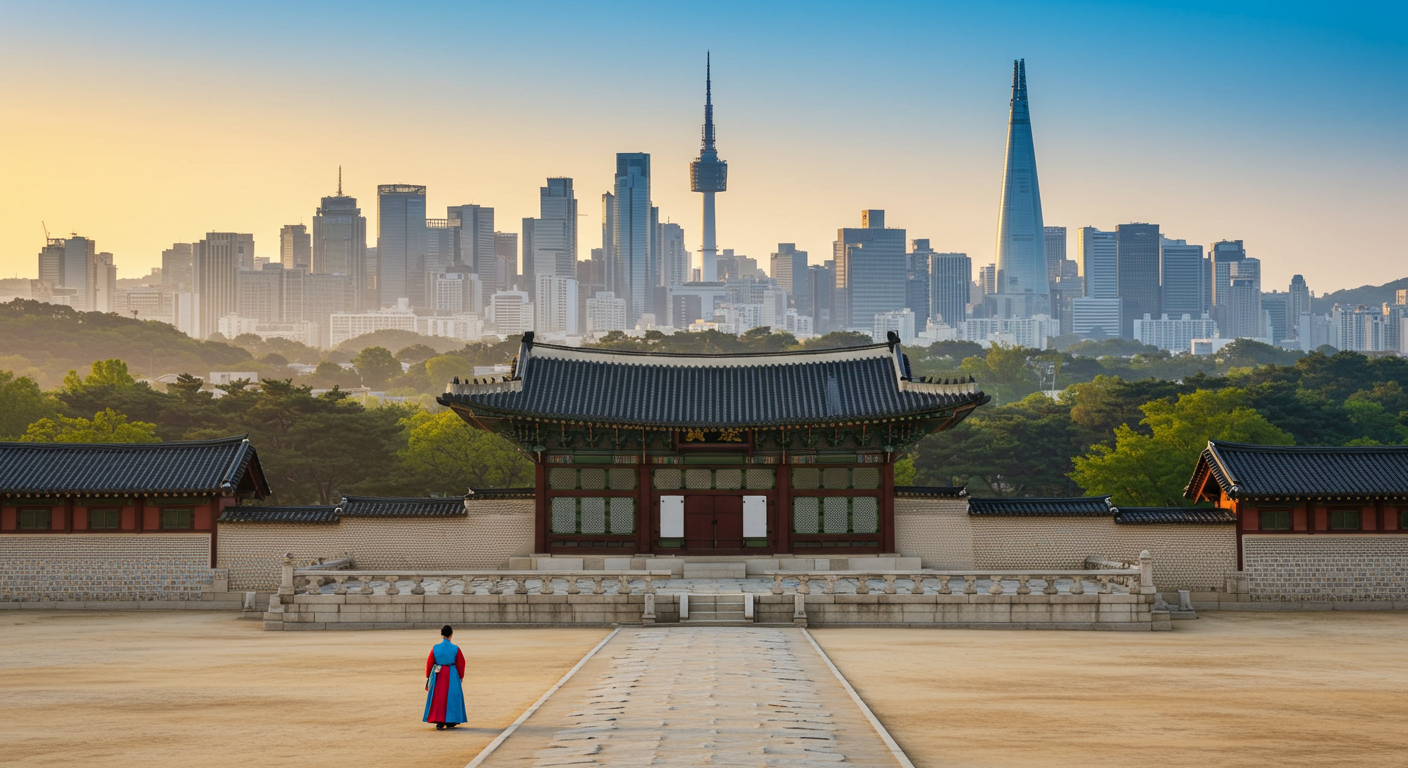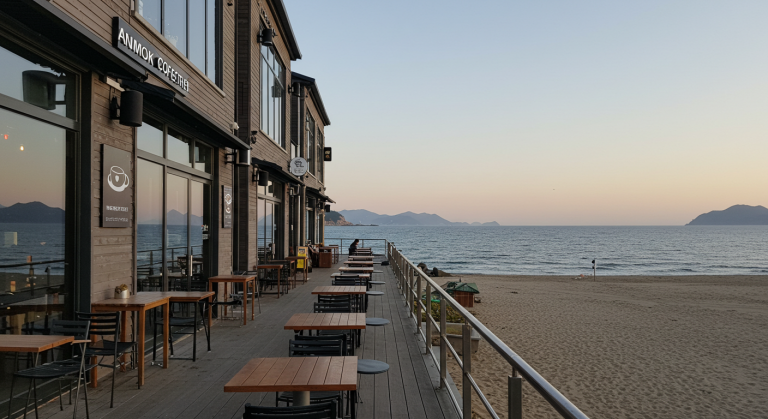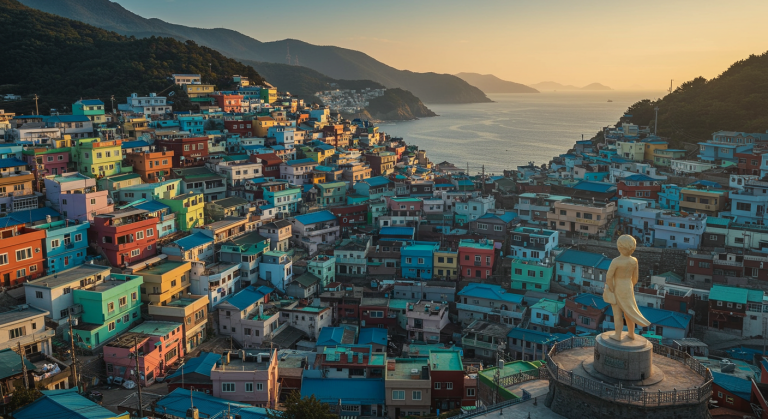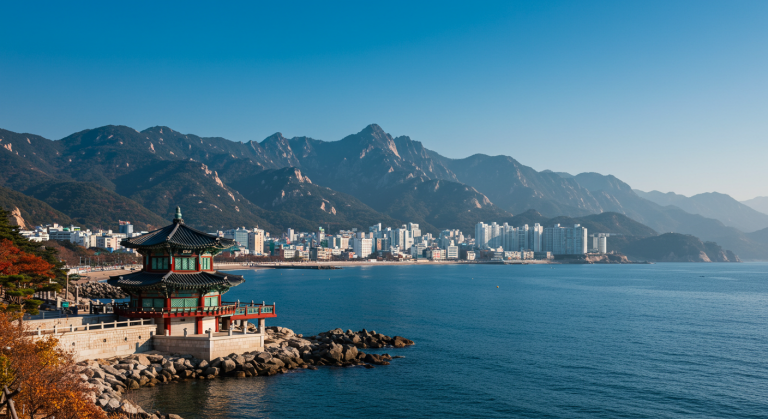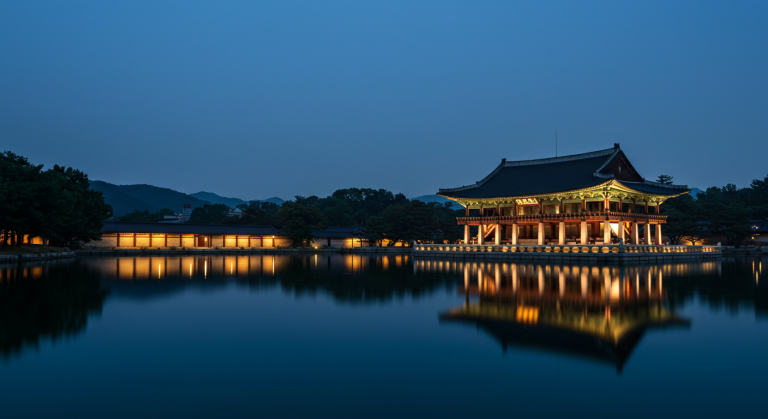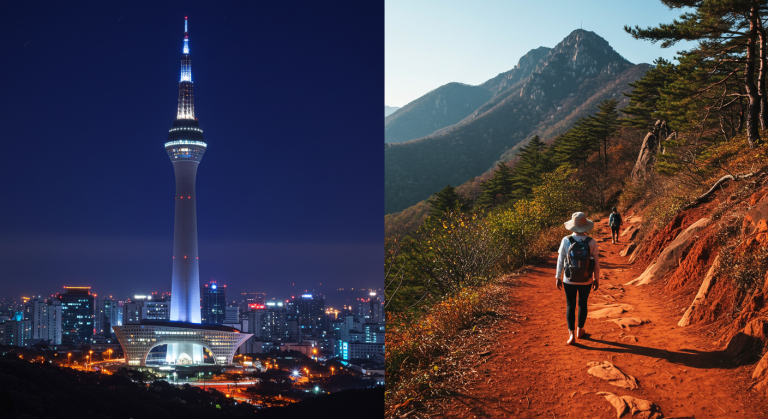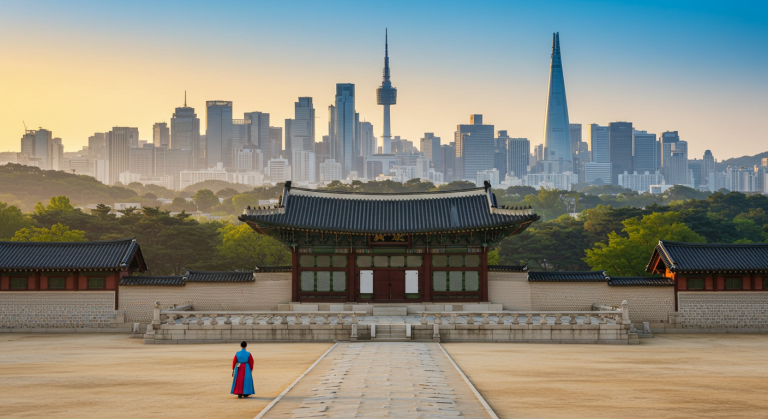The Secret Side of Ulsan: From Sunrise Capes to the Simnidaebat Bamboo Forest

This ultimate guide unveils the city’s must-visit spots, ranging from breathtaking coastal sunrises and ancient petroglyphs to the modern marvel of its grand parks.
Plan your perfect, in-depth Ulsan adventure with our expert tips, detailed itineraries, and budget estimation tools. 🧭
Have you ever planned a trip and decided to go off the beaten path, past the major cities everyone talks about?
That’s exactly what I did with Ulsan, and I’m so glad I took the plunge!
For too long, Ulsan has been defined solely by its incredible industry—it’s the backbone of South Korea’s economy, hosting giants like Hyundai.
But let me tell you, this city is a total sleeper hit for travelers, offering a profound blend of rich history, dramatic coastline, and serene nature that completely surprised me, and I’m confident it will surprise you too.
From chasing the first sunrise to wandering through a misty bamboo forest, Ulsan offers unique experiences you simply won’t find in Seoul or Busan.
I’ve compiled everything you need—the must-see spots, the local food secrets, and the essential logistics—to transform your next South Korea trip into an unforgettable, deep-dive adventure.
Section 1: The Dramatic Coastline and the Power of the Sun 🌅
The East Sea coast running along Ulsan is spectacularly rugged and offers genuinely world-class views.
This is where your Ulsan journey should begin, ideally very early in the morning!
1.1 Ganjeolgot Cape (간절곶): Korea’s Sunrise Starting Line
Ganjeolgot is a spiritual experience for many Koreans, especially on January 1st, as it’s the fastest place on the mainland to greet the New Year’s sun.
Even outside of the holiday rush, the atmosphere here is incredibly serene, making it the perfect antidote to the hustle of city travel.
The large, picturesque lighthouse and the vast, open ocean views make for breathtaking photos, and the area is dotted with adorable cafes where you can enjoy a morning coffee after the spectacle.
I highly recommend taking a leisurely walk along the coastline path; the fresh sea air is incredibly invigorating!
1.2 Daewangam Park (대왕암 공원): Dragon Rock and Coastal Majesty
Further up the coast, you’ll find Daewangam Park, which truly feels like a place out of Korean legend—because it is!
The park is named after the “Great King Rock,” a majestic island of rock connected to the mainland by an impressive, dramatic bridge.
Legend says the soul of King Munmu’s queen became a dragon and settled under this rock to guard the country.
The pine forests in the park are incredibly lush, and the combination of the green trees, the dark rocks, and the deep blue water is absolutely stunning—a must-see for nature lovers.
🌊 Insider Tip: Coastal Photo Spots
At Daewangam Park, cross the bridge and climb the stairs for a 360-degree view, but the best photos are often taken from the main park trail looking *back* at the bridge and the rock—it captures the scale of the structure beautifully.
At Ganjeolgot, make sure to find the giant postbox! It’s an iconic and fun photo opportunity.
Section 2: Ulsan’s Green Heart: Gardens and Forests 🌳
It’s almost unbelievable that a city known for its heavy industry also harbors one of South Korea’s most beautiful and largest green spaces.
The Taehwagang area is a testament to Ulsan’s successful efforts in urban renewal and environmental conservation.
2.1 Taehwagang National Garden (태화강 국가정원): The Bamboo Escape
The sheer scale of this National Garden is impressive, stretching for miles along the Taehwagang River.
It has distinct themed gardens, beautiful seasonal flower beds, and winding walking paths, making it perfect for a whole afternoon’s exploration.
However, the Simnidaebat Bamboo Forest is the absolute centerpiece.
Walking through those towering, dense stalks of bamboo is an incredibly therapeutic experience—it’s cooler, quieter, and the gentle rustling sound is pure relaxation.
Pro-tip: Rent a bike! The paths are well-paved and flat, allowing you to cover the vast area of the park much more quickly and enjoyably than on foot.
2.2 Yeongnam Alps (영남알프스): Hiking for the Adventurous Soul
For those who seek elevation, Ulsan borders the stunning Yeongnam Alps, a range of nine peaks over 1,000 meters.
While perhaps not as famous as Seoraksan, the area offers breathtaking vistas and challenging, yet rewarding, hikes.
The Gajisan Provincial Park area is a great place to start.
It’s an excellent way to see the city from above and connect with the deeper, more rugged side of Ulsan’s natural surroundings.
If attempting the Yeongnam Alps, always check the weather forecast and wear appropriate hiking gear.
The high peaks can experience rapid weather changes, especially in spring and autumn. Always carry enough water and let someone know your planned route.
Section 3: Diving into Ulsan’s Unique Culture and History 🗿
Ulsan’s cultural story is truly unique, mixing ancient history with a complex, modern past.
These sites are fantastic for travelers who want to understand the soul of the city.
3.1 The Petroglyphs of Bangudae Terrace (반구대 암각화): Prehistoric Legacy
These UNESCO-recognized petroglyphs are arguably one of the most significant historical sites in all of Korea, dating back *thousands* of years.
The rock carvings provide a visual record of life and hunting practices—especially whale hunting—from the prehistoric era.
It’s mind-blowing to think about the people who created this art.
The viewing platform gives you the chance to see these incredible carvings, but as I mentioned before, timing is key due to the water level.
3.2 Jangsaengpo Whale Culture Village (장생포 고래문화마을): Maritime Memory
Jangsaengpo offers a poignant look at Ulsan’s 20th-century whaling history—a chapter that is now closed but remains a crucial part of the city’s identity.
The village is designed to look like the old port town, complete with retro houses, a charming lighthouse, and engaging museums.
I enjoyed the Whale Museum and the chance to walk aboard a real whale-watching ship (cruises are seasonal, so check ahead!).
It’s a fun, family-friendly area that gives a great perspective on Ulsan’s role as a major coastal hub.
🗺️ Essential Bangudae Visibility Guide
| Season | Typical Visibility | Best Months |
|---|---|---|
| Spring/Summer | Low (Water Level High) | May – August |
| Late Autumn/Early Spring | Best (Water Level Low) | Oct – Dec & Mar – Apr |
*Always confirm with the Ulsan Cultural Heritage Center before making a special trip to Bangudae.
Section 4: The Culinary Secrets of Ulsan: What to Eat 🍽️
Let’s be honest: food is half the reason we travel, right?
Ulsan’s cuisine is heavily influenced by its coastal location and its agricultural areas, giving it a distinct and delicious flavor profile.
4.1 The Regional King: Eonyang Bulgogi (언양 불고기)
Forget what you think you know about *Bulgogi*; Eonyang Bulgogi is a game-changer and an absolute regional specialty.
It’s made with high-quality beef that is thinly sliced, lightly marinated, pressed into a patty, and then grilled over hot charcoal.
The result is a delicate, smoky, and incredibly tender bite that melts in your mouth—it’s far less sweet and saucy than typical Seoul-style bulgogi, highlighting the quality of the beef itself.
You absolutely must make a trip to the Eonyang area for the most authentic experience, as many restaurants there specialize in this dish.
4.2 Fresh Seafood: Coastal Delights
Being a major port, Ulsan boasts access to incredible fresh seafood.
Look for restaurants near Jeongja Port (정자항) for the freshest catch, especially *Hae-mul-tang* (Spicy Seafood Stew) or raw fish dishes (*Hoe*).
The local favorite I discovered was a simple but refreshing bowl of *mulhoe* (cold raw fish soup), which is the perfect summer treat after a long day of sightseeing.
I confess, when I heard “Bulgogi,” I thought I’d had it all. But the Eonyang version, with its light char and intense beef flavor, was truly different. I had it wrapped in fresh lettuce with a sliver of garlic, and it was the highlight of my Ulsan food tour. Don’t skip it!
Section 5: Practical Ulsan Logistics: Getting Around and Staying 🚗
Ulsan is a sprawling city, and navigating it requires a slightly different approach than the highly concentrated public transport systems of Seoul or Busan.
Planning your transport is critical to maximize your sightseeing time.
5.1 Transportation Breakdown: Car vs. Bus
- Rental Car (Recommended): If you plan to visit Ganjeolgot, Bangudae, *and* the city center (Taehwagang), a rental car gives you the most flexibility. Parking is generally easy and affordable at major tourist spots.
- Public Bus: Ulsan has an extensive bus system, but routes can be long and transfers frequent. It’s excellent for city-center spots like Taehwagang Garden and the Samsan area, but less efficient for the remote coastal capes.
- KTX Train: The main Ulsan Station (울산역) is a KTX stop, making high-speed rail access from Seoul (approx. 2.5 hrs) incredibly fast. However, note that the station is located far outside the city center, requiring a 30-40 minute bus or taxi ride into town.
5.2 Accommodation Guide: Where to Stay
Most tourists choose one of two areas for lodging, depending on their priorities:
1. The Samsan/Lotte Department Store Area: This is the most modern and bustling part of Ulsan, offering numerous hotels (business and high-end), shopping, and nightlife. It’s centrally located for food and easy taxi access.
2. The Taehwagang/City Hall Area: This area is slightly more traditional and provides excellent access to the National Garden. It’s quieter and often has more boutique or budget-friendly options.
💡 Travel Hack: Public Transport Fare Calculator (Example)
In Ulsan, most bus and subway fares are integrated with the standard T-money/Cashbee card. Here’s a simple example of a daily public transport budget.
*Note: Taxi/rental car costs will be higher but save considerable time. Always factor in the cost of time saved!
Conclusion: Ulsan Awaits Your Discovery 💎
Ulsan truly impressed me. It’s a city that carries the weight of South Korea’s industrial might while simultaneously offering unparalleled natural escapes and deep historical roots.
It’s an ideal destination for travelers who appreciate contrasts and want to see a side of Korea that is often missed on standard itineraries.
Whether you spend your days soaking in the panoramic sunrise at Ganjeolgot, finding tranquility in the Simnidaebat Bamboo Forest, or savoring the unique taste of Eonyang Bulgogi, Ulsan guarantees an enriching and memorable journey.
Don’t be afraid to rent that car, chase that sunrise, and step off the usual tourist track—Ulsan is waiting for your discovery!
Did this guide inspire your next trip? I’d love to hear which of Ulsan’s hidden gems you plan to visit first! Drop a comment below! Safe travels! 👋
